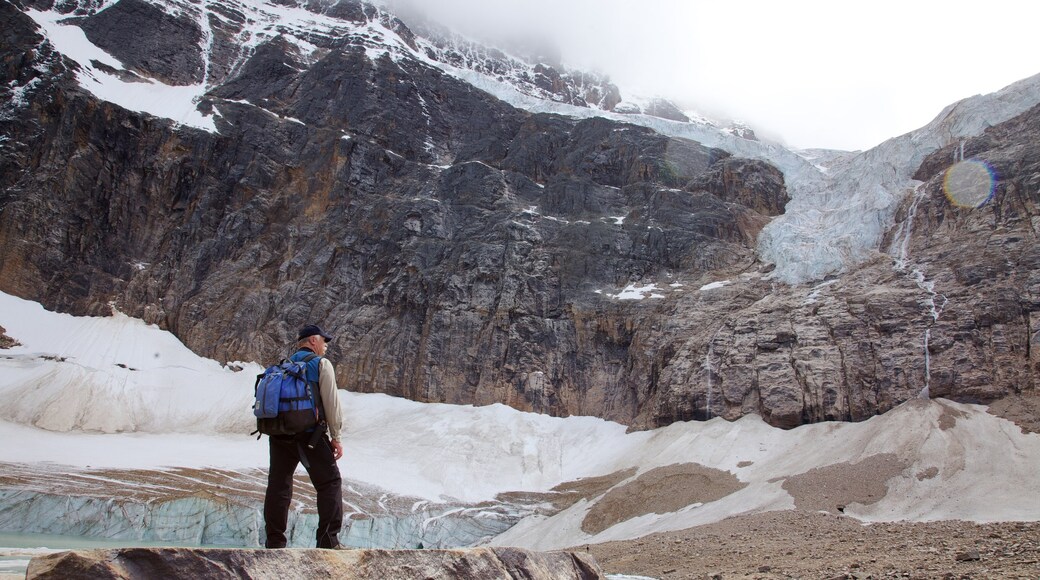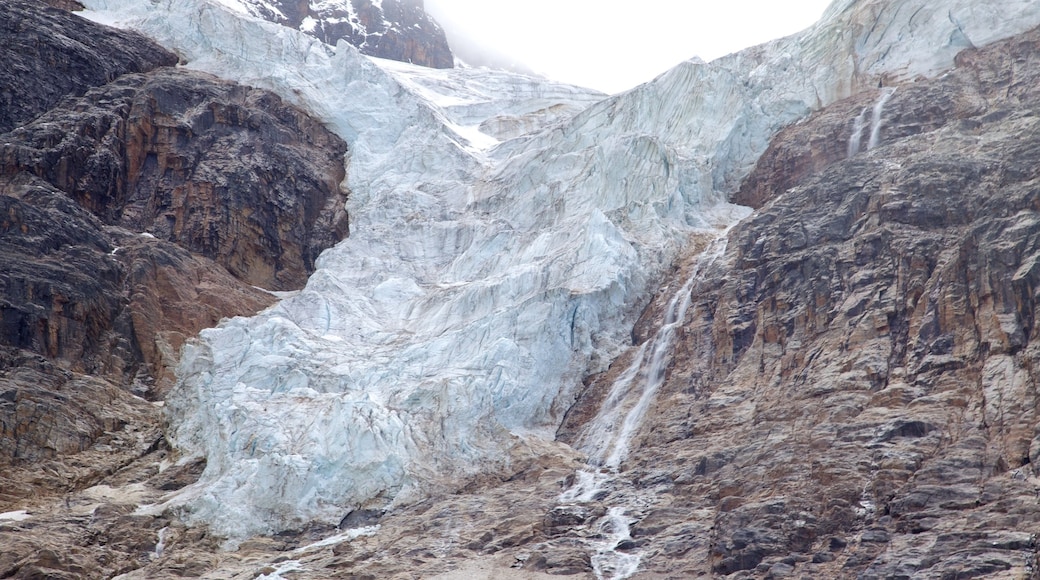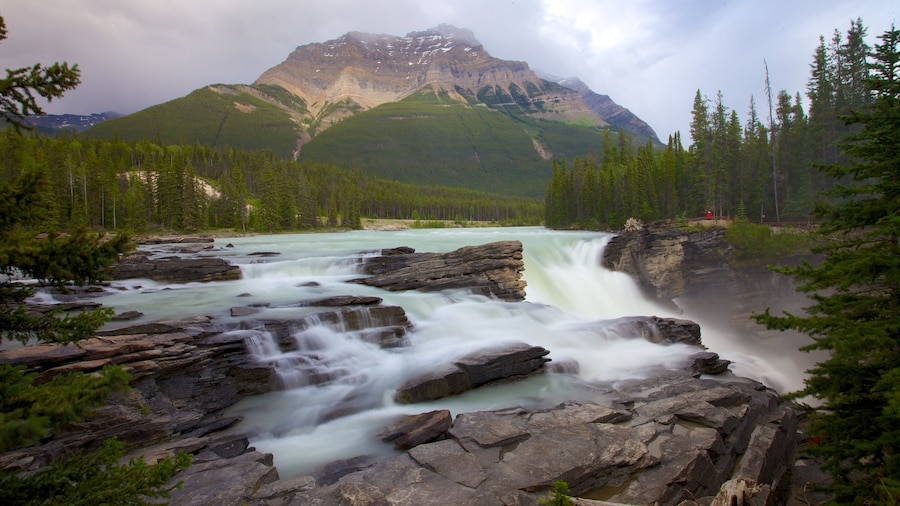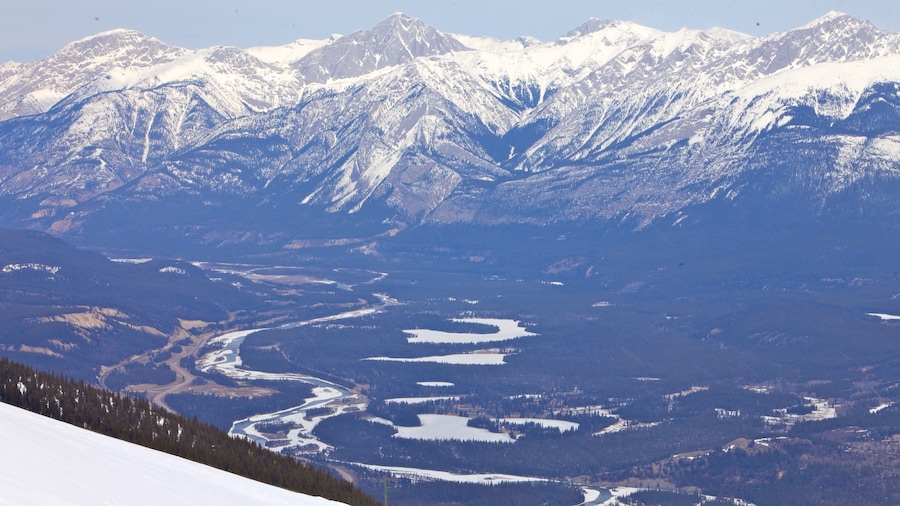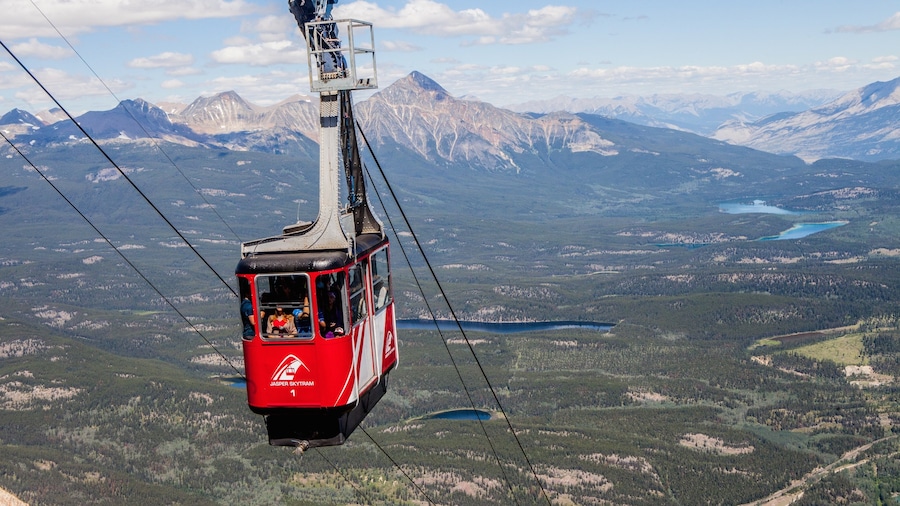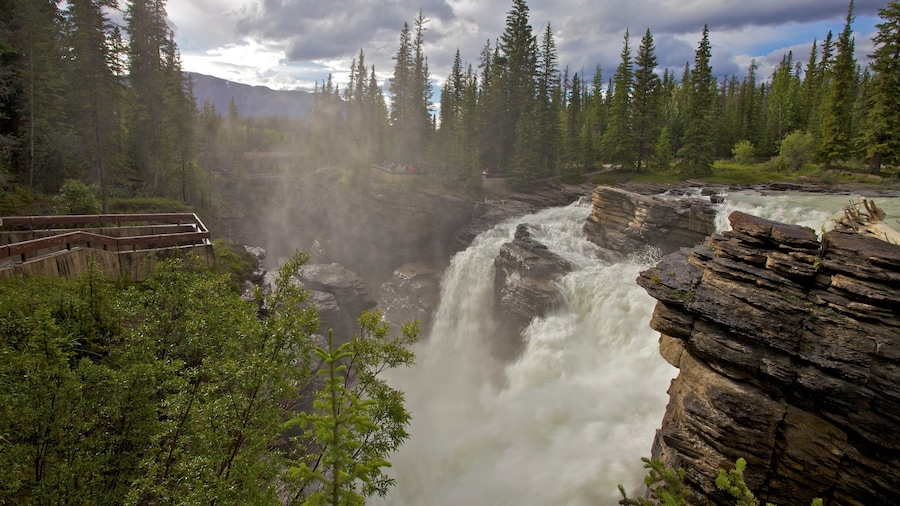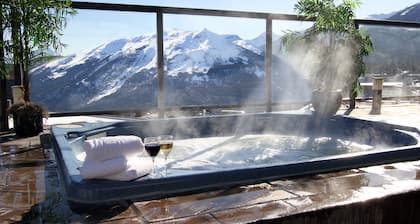A trip to Mount Edith Cavell is as easy or as challenging as you want it to be. Its 11,034 feet (3,363 meter) peak can be conquered by the adventurous, but those who would rather just take in a the scenery can stick to easier trails. Two base trails lead to Angel Glacier and the longer of the two goes on to the Cavell Meadows.
Though its history is ancient, Mount Edith Cavell’s name is relatively new. Originally the mountain was called “White Ghost” by Native Amercians. A French mountaineer called it ”la Montagne de la Grande Traverse. However, during World War I it was officially renamed Edith Cavell, to commemorate the execution of this heroic Red Cross nurse.
Coming off the north face of Mount Edith Cavell is the Angel Glacier. It derived its heavenly name from its shape, which used to be like an angel spreading its wings. The ‘wings’ are still there, but the bottom half has eroded. The glacier pours down in a small lake. Often you can see icebergs floating around it.
You can see the Angel Glacier at the start of the Cavell Meadows trail. This trail is more strenuous than the short Path of the Glacier Trail. In summer, the meadows come alive with the colors of various alpine flowers, The ascending trail leads you between forested areas and glacial deposits, offering superb viewpoints along the way. Allow three hours for the return trip.
If you are a mountaineer, choose between the various ascents up Mount Cavell. The North Face Main Summit route is one of the most challenging and is rated among the best in North America. To attempt any climb, you should be fully equipped and experienced.
Mount Edith Cavell is located in Jasper National Park. Head south from Jasper along Icefields Parkway and branch off to the right before it crosses the Athabasca River. Cavell Road completes the journey to the foot of the mountain, but be aware that this road is usually closed in winter due to snowfall.
